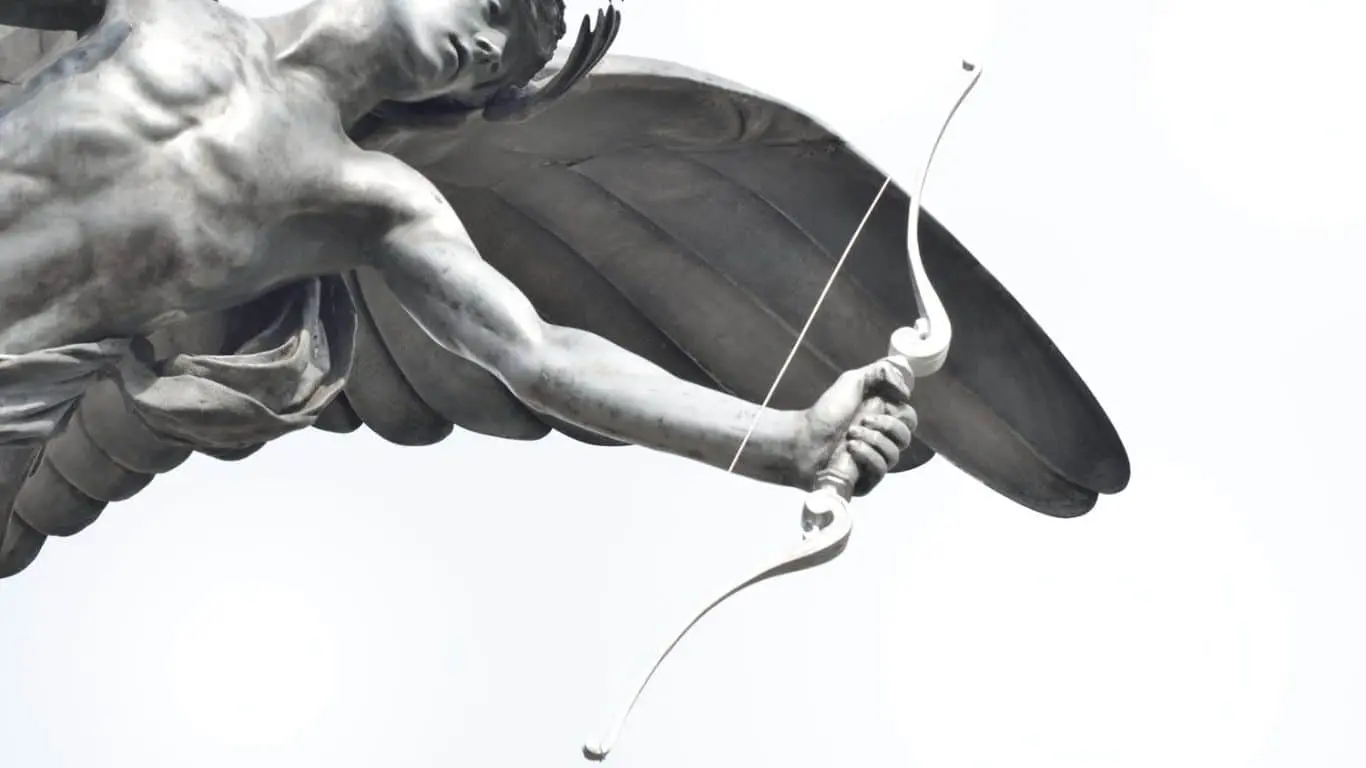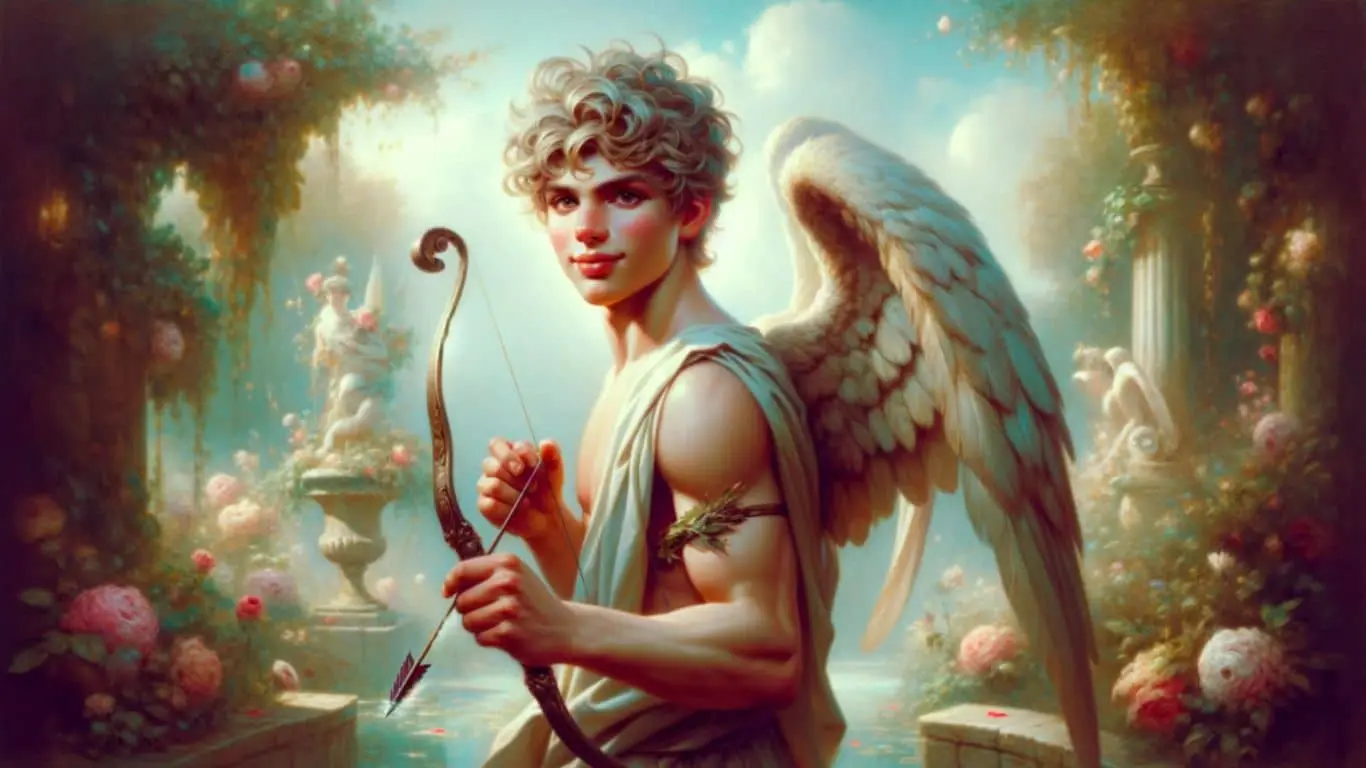Eros, a prominent deity in Greek mythology, represents the fundamental forces of love, lust, desire, and sex. His influence spans literature, art, and culture, embodying both the beauty and chaos that love can bring. This blog will delve into the origins, mythological tales, artistic depictions, and cultural significance of Eros, offering a comprehensive look at this multifaceted god.
Origins and Family
Eros is often considered one of the primordial gods, with varying accounts of his origins. According to Hesiod’s “Theogony,” Eros was born from Chaos, making him one of the oldest gods. In contrast, later traditions, such as those recounted by the Roman poet Ovid in “Metamorphoses,” describe Eros as the son of Aphrodite, the goddess of love and beauty, and Ares, the god of war. This lineage emphasizes the duality of love and conflict inherent in Eros’s nature.
Symbols and Attributes
Eros is frequently depicted with several symbols that highlight his divine functions. His most iconic attribute is the bow and arrow, representing his ability to inspire both love and desire in gods and mortals alike. Eros’s arrows come in two types: gold-tipped arrows that induce uncontrollable love and lead-tipped arrows that cause aversion. He is also often shown with wings, signifying the swift and unpredictable nature of love.

Mythological Tales
Eros’s influence is prominent in many Greek myths. One of the most famous stories is that of Eros and Psyche. In this tale, Psyche, a mortal woman of extraordinary beauty, incurs the jealousy of Aphrodite. The goddess sends Eros to make Psyche fall in love with a hideous creature, but Eros himself falls in love with her. The story follows Psyche’s trials and tribulations to reunite with Eros, ultimately culminating in her becoming immortal. This myth encapsulates themes of love, jealousy, and redemption.
Another significant myth involving Eros is his role in the love affair between Helen of Troy and Paris, which sparked the Trojan War. Eros’s arrow strikes Helen, causing her to fall in love with Paris, leading to one of the most infamous conflicts in mythology.
Artistic Depictions
Eros has been a popular subject in art throughout history. In classical Greek art, he is often portrayed as a youthful and mischievous figure, reflecting the playful aspects of love. Renaissance artists, such as Michelangelo and Caravaggio, reinterpreted Eros (known as Cupid in Roman mythology) with a more cherubic and innocent appearance. These artistic representations highlight the evolving perception of Eros from a powerful deity to a symbol of romantic love.
Eros in Literature
Literature has extensively explored the themes associated with Eros. Ancient Greek playwrights, such as Aristophanes and Euripides, incorporated Eros into their works to explore the complexities of human emotions. In “Lysistrata,” Aristophanes uses Eros as a metaphor for the power of sexual desire in driving the plot. Similarly, in “Hippolytus,” Euripides examines the destructive aspects of unchecked desire.
In modern literature, Eros continues to inspire writers. The concept of the “erotic” is derived from his name, emphasizing the deep connection between Eros and the exploration of human sexuality. Authors like Anaïs Nin and D.H. Lawrence have delved into the erotic as a literary theme, drawing on the ancient symbolism of Eros.

Eros and Psychology
Eros’s influence extends beyond mythology and art into the realm of psychology. Sigmund Freud, the founder of psychoanalysis, used the term “Eros” to describe the life instinct, encompassing the drive for life, love, and sexual reproduction. Freud contrasted Eros with Thanatos, the death instinct, illustrating the fundamental duality of human nature. Carl Jung, another prominent psychologist, also referenced Eros in his theories on the anima and animus, the feminine and masculine aspects of the psyche.
Cultural Significance
Eros’s cultural impact is vast and enduring. Festivals dedicated to Eros, such as the Erotesia, were celebrated in ancient Greece, reflecting his importance in everyday life. In modern times, Eros continues to be a symbol of love and desire, influencing Valentine’s Day traditions and the broader romantic ideal.
Eros’s legacy can also be seen in popular culture. Movies, books, and music frequently draw on themes of love and desire, often personified by characters inspired by Eros. From Shakespeare’s “Romeo and Juliet” to contemporary romance novels and films, the essence of Eros permeates narratives that explore the highs and lows of love.
Also Read: Dionysus: God of Wine | Vegetation | Fertility | Festivity | Ritual Madness | Religious Ecstasy and Theatre



